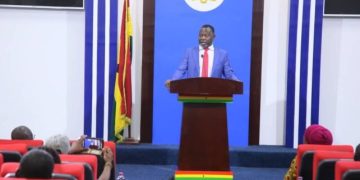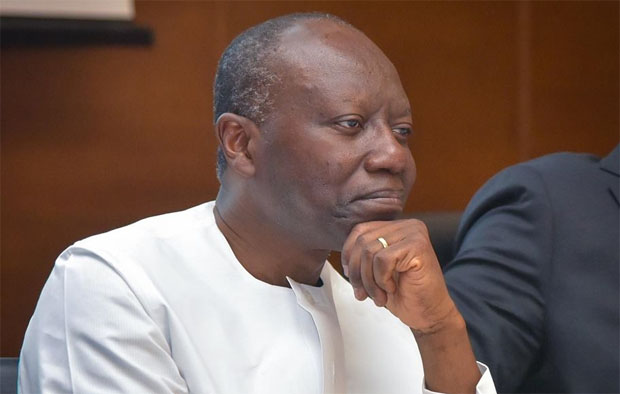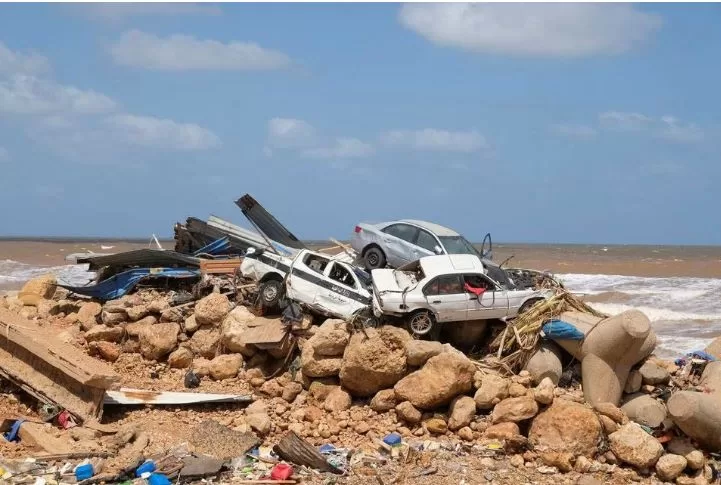Bodies were washing ashore in eastern Libya on Wednesday, swelling the death toll from a storm that swept whole neighbourhoods out to sea, with thousands already confirmed dead and many thousands more still missing.
The flood torrent, unleashed by a powerful storm on Sunday night that burst dams, obliterated around a quarter or the Mediterranean city of Derna. Whole multi-storey buildings were swept away with sleeping families inside.
The “sea is constantly dumping dozens of bodies”, Hichem Abu Chkiouat, minister of civil aviation in the administration that runs eastern Libya, told Reuters by phone.
“We have counted more than 5,300 dead so far, and the number is likely to increase significantly and may even double because the number of missing people is also thousands,” he added.
Tens of thousands of people had been made homeless, he said, appealing for international aid and adding that Libya did not have the experience to deal with the aftermath of such a disaster.
Officials say at least 10,000 people are feared missing or dead, though tolls confirmed dead so far vary. Tariq Kharaz, a spokesperson for the eastern authorities, said 3,200 bodies had been recovered, and 1,100 of them had yet to be identified.
The U.N. migration agency, the International Organization for Migration, said at least 30,000 people had been displaced in Derna.
The devastation was clear from high points above Derna, where the densely populated city centre, built along a seasonal riverbed, was now a wide, flat crescent of muddy water, gleaming in the sun, all its building swept away.
At a hospital, scores of bodies wrapped in blankets were laid out on the floor in corridors or outside on the pavement, for residents to try to identify them.
Mustafa Salem said his entire family lived near the river valley opposite a mosque. They were asleep when the flood hit, and no one has been found alive.
“We are all neighbours. We lost 30 people so far, 30 members of the same family,” he told Reuters. “We haven’t found anyone.”
As Reuters was on the road to return to the city on Wednesday, aid convoys and trucks carrying bulldozers could be seen heading in.
Satellite photographs of the city from before and after the disaster showed that what had been a narrow waterway through the city centre was now a wide scar, with all the buildings that had run along it gone. Extensive damage, with buildings missing, was also clearly visible in other parts of the city.
Rescue operations are complicated by deep political fractures in the country of 7 million people that has yet to rebuild a strong central government since the NATO-backed uprising that toppled Muammar Gaddafi in 2011.
An internationally recognised Government of National Unity (GNU) is based in Tripoli, in the west, while a parallel administration operates in the east, including Derna.
Libya’s Tripoli-based Prime Minister Abdulhamid al-Dbeibah called the floods an unprecedented catastrophe. Libya’s Presidential Council head Mohammed al-Menfi has called for national unity.
The U.N. Office for the Coordination of Humanitarian Affairs said emergency response teams had been mobilised to help on the ground. Governments including Qatar and Turkey have rushed aid to Libya.
The United Arab Emirates has sent two aid planes carrying 150 tonnes of urgent food, relief and medical supplies to eastern Libya, the UAE’s state news agency WAM reported.
Additional reporting by Tarek Amara in Tunis, Nayera Abdallah and Tala Ramadan, Alvise Armellini in Rome; Writing by Tom Perry and Alastair McDowall Editing by John Stonestreet and Peter Graff




























